Крис Grinter, 1 июля, 2010 А теперь о еще более редко повторяющиеся серии, общественное мнение! Для тех, без рубцов средней школы воспоминания о латинской класса (не по вине моего учителя) Я принесу вам до скорости – название примерно переводится как “глас народа”. Вот еще один старый адрес электронной почты, что я копил. Это 100% real message, but of course I have redacted the real names and addresses to protect the innocent. Enjoy! I also highly encourage submissions of your own-
Winter 2008:
“Привет, I’m so glad I found you. Now, I hope you can help me. 1982, while camping at an old gold mining camp in the Mendocino National Forest I was bitten by a large brown spider. It took three days for the venom to pass through my system. On day three I was 95% blind, the bite swelled to a large grotesquely deep red bump on my arm. I’ll never forget the 12 hours the venom attacked me. The price I payed to survive this spiders venom was…….to loose absolutely all my body fat. I spoke with a doctor from Santa Rosa by phone from a friends place in (some small CA town). He knew about this spider and couldn’t believe I suvived the venom when I told him I lost all my body fat. He also told me it was impossible for someone to survive loosing all their body fat in 12 часов. I reminded him that this was an impossible situation. He told me that this spider is being kept from the public. I believe this spider came from China or Russia. These spiders don’t share anything with other Cali spiders. They have big bodies and short stout legs. The female that bit me was about 4 inch’s and, had 5 males. Four years later, while living in the Hayward hills, I couldn’t believe my eyes, running across the floor, another one. This spider was about 6 inch’s. I know these spiders don’t climb walls or spin webs. They build nest’s, and obtain 4-5 males to protect her and find food. The female never leave’s the nest except…………when a larger female drives her out and, kills her males. This is when people are bitten by this spider, as she runs around looking for another nest. Bites are very uncommon. I wondered………….how big was the female that drove that 6 inch from her nest. И………….how big do they get. Can I find this spider on display at (your museum)? Is it possible to find all the information their is on this very dangerous spider?”
Continue reading Vox Populi, Том II
Крис Grinter, on June 26th, 2010 Добро пожаловать в восьмой том непоследовательно повторяющейся серии., Genius пресс-. я наткнулся эта статья недавно в отношении эндемичной пуэрториканской бабочки. Кто может точно сказать мне, почему этот отчет вводит в заблуждение?? Это может быть немного сложнее, чем стандартный GOP (Я предлагаю отказаться от любых ранее связанных аббревиатур с этими буквами.). Намекать, просто сказать мне, что бабочка на картинке из Малайзии, не ответ, который я ищу!
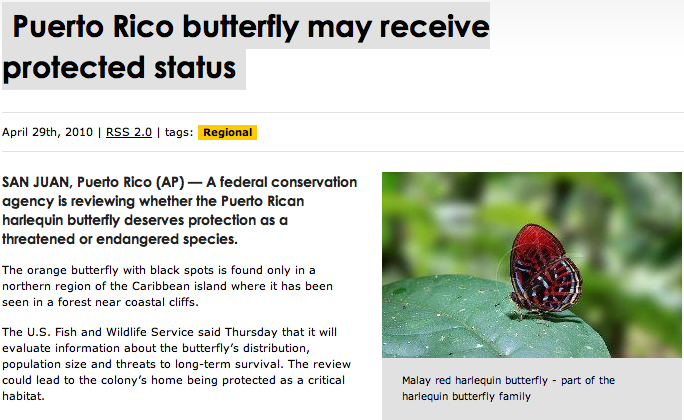
Крис Grinter, 23 июня, 2010 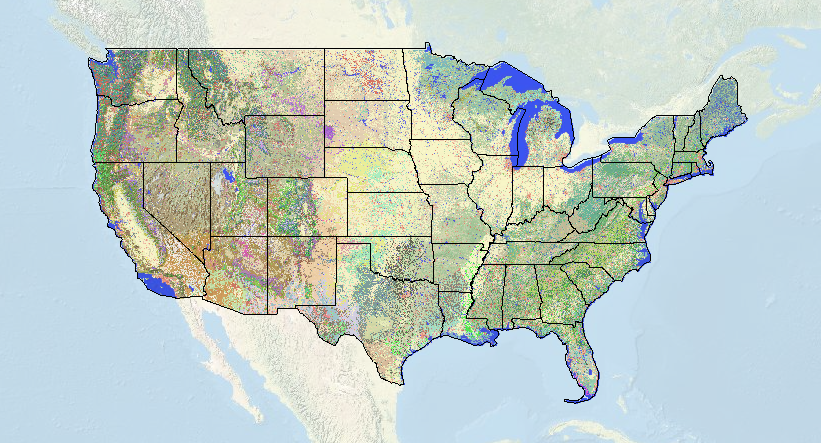
Меня всегда интересовало, как найти правильную терминологию для земного покрова в данной области.. Обычно, Я просто оцениваю что-то вроде “дубовый чапараль”. Но теперь я могу использовать это классная новая карта предоставлено нам Геологической службой США / Национальной инфраструктурой биологической информации. Уровень детализации потрясающий, и вы можете указать степень точности с помощью раскрывающейся вкладки (1-3). Теперь, имея топографическую карту США в высоком разрешении, я могу точно видеть, где находятся самые большие насаждения монтеррейской сосны. (на самом деле это Калифорнийский прибрежный закрытый хвойный лес и лесной массив) так что я могу оптимально разместить свою ловушку в эти выходные.
Continue reading Landscape Cover Map
Крис Grinter, on June 18th, 2010 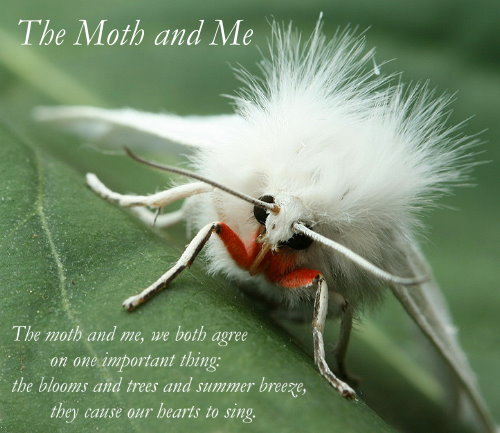
Welcome to The Moth and Me #12, and my first blog carnival. Despite blogging for a few months I have yet to take a look back and reflect on exactly how I became enamored with lepidoptera in the first place. Remembering a time or location where this happened is impossible, and like many of my colleagues and I’m sure many of my readers, I had a butterfly net and “bug cage” in hand as soon as I could walk. When it comes to entomology I believe almost everyone falls in love at first with a large and striking insect. For me it was a butterfly, naturally. I can remember staring for endless hours at the diversity of Ornithoptera and Papilio illustrated in Paul Smart’s famous book. Somewhere along the way in pursuit of something new I began to stray into the nocturnal world. Moths comprise the majority of the diversity of Lepidoptera; while there are nearly 11,000 species in the United States, only a few hundred are butterflies. This quickly opened a door (maybe into an abyss…) to the shocking abundance found everywhere around us. This amazing diversity has now drawn me deep into the biology and evolutionary history of the Lepidoptera. Editing these fourteen contributions of moth blogging together I just can’t help but to reflect back on some of my own mothing journey.

пerhaps if I was a child in Europe this moth (Deilephila elpenor porcellus) would have been the first to catch my eye. Over at Urban Moths Ron Laughton has discovered the stunning diversity in his own back yard in much the same way as I did growing up here in the US. Take a look at the types of traps he has been using, most of which he constructed himself. One of the best behaviors of moths is their willingness to dive headlong into the light. Not too far from Ron, Mike Beale has been blogging british moths as well. It can be pretty amazing just how similar our two faunas are (a few moths actually являются the same).
Continue reading The Moth and Me #12
Крис Grinter, 11 июня, 2010 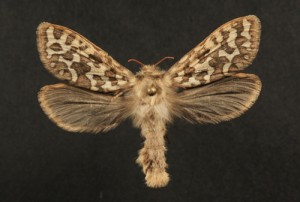
Этот мотылек так же редок, как и его паранормальный тезка. (кроме того, что это реально) – это Gazoryctra sp.. в семействе Hepialidae. Они представляют базовую линию чешуекрылых и широко известны как мотыльки-призраки или быстрые мотыльки.. Призрак – потому что известно, что самцы некоторых видов летают на настоящих токах., где они парят вверх и вниз на травянистых полянах в сумерках, пока самки наблюдают. Эти же самцы также призывают самок с помощью феромонов., немного отсталая ситуация с насекомыми. Быстрый- скорее самоочевидно, но известно, что бореальные виды хорошо летают.
Одной из особенностей, которая помогает указать на это как на базальную линию, является размещение крыльев на теле., какое-то жилкование крыльев, уменьшенный или отсутствующий ротовой аппарат и отсутствие прочного соединительного устройства крыла. У этих бабочек есть “ярмо”, который представляет собой небольшой выступ, похожий на большой палец, из верхней части заднего крыла.. Другие линии мотыльков имеют механизм тесной связи, известный как уздечка и удерживатель., где щетинки соединяют два крыла вместе, так что они остаются соединенными во время полета. В состоянии покоя яйцевидная кость складывается и, вероятно, помогает удерживать крылья вместе. – но не в полете; переднее крыло не синхронизировано с задним и полет не динамичный (Скобл 1992).
В Америке биология гепиалид изучена очень плохо.. В глобальном масштабе описано лишь несколько жизненных историй. – все они кажутся эндофагами (скучный) в корневой системе растений. Некоторые личинки раннего возраста могут питаться в опавших листьях или под землей на корневой системе, прежде чем войти в корневище.. Австралии повезло иметь разнообразную и впечатляющую фауну Hepialidae. – многие ярко окрашенный и огромный (250мм или до 12 дюймы!), и немного лучше изучены. Некоторые личинки настолько распространены, что аборигенные племена использовали их в качестве основного источника пищи..
Но вернемся к этой бабочке в частности. Я поймал его в своей ловушке черного света в августе прошлого года в Сьерра-Неваде. 10,500 футов. Вид неизвестен, а может и новый. Самое неприятное, что это единственный экземпляр, известный науке.. Весь род очень редок, за исключением одного или двух обычных видов, существует всего несколько десятков экземпляров. Так это самка вида, описанного только от самца? Причудливая аберрация известного вида? А может он действительно новый. Я закодировал ДНК, это на самом деле ничего мне не говорит, поскольку нет никаких последовательностей от любых близкородственных видов. На самом деле, насколько я знаю, другие виды в Сьерре даже не собирались десятилетиями, поэтому я даже не могу получить последовательность из более старого экземпляра.. Вишенка на торте — их поведение.. Они редко, если когда-либо, выявляться – что может быть результатом их сумеречного полета. В нужную ночь они могут быть на крыле для 20-30 минут, обычно самка ищет самца, или самка летит откладывать яйца (скорее всего просто эфир разбрасывает яйца по земле). Итак, в конце августа я вернусь в горную Сьерру с несколькими добровольцами из отдела энтомологии в надежде увидеть, как один из них пронесется мимо меня на крутых склонах.. Если я получу еще немного, это может оказаться впечатляющим новым видом для Калифорнии.
Крис Grinter, 11 июня, 2010 Who can see what’s wrong with эта статья?

Крис Grinter, 9 июня, 2010 
This recent article in the American Naturalist has taken a second look at some of the famously inflated species estimates, некоторые собирается достигать 100 миллиона (Erwin, 1988). Оценки, проведенные авторы показывают, что прогнозы выше 30 миллионов имеют вероятности <0.00001. Их предполагаемый диапазон, более вероятно, будет между 2.5 и 3.7 million species (with 90% confidence). This seems somewhat reasonable given that these extraordinary estimates were based heavily on extrapolation. There are clearly many difficulties in assessing diversity based on tropical arthropod surveys – this paper again uses phytophagous (plant-eating) beetles for estimates. They are careful to point out that these methods do not account for non-phytophagous insects, but assume that they will follow traditional biogeographic patterns of diversity. This is somewhat of a new concept given that when I was in college I was taught that parasitoids are counterintuitively not more diverse in tropical regions. This hypothesis is more often than not being proven false in the light of more precise modern taxonomic methodology. Rather proudly I helped play a role with the parasitoid project at the UIUC. Короче говоря, host specificity is more extreme in tropical environments with hundreds of cryptic species hidden amongst rapidly radiating groups such as the microgastrine Braconids (Перепончатокрылых) – the same has held true across similar taxa.
One interesting note about the paper is their inclusion of a secondary estimation based on Lepidoptera canopy assemblages. They assumed that a) all Lepidoptera can be found in the canopy and b) that all leps are phytophagous. This is clearly a very conservative estimation given that not all Lepidoptera are found in the canopy and not all are phytophagous. While I do not have the numbers on hand, a certain percentage of lep diversity must have been excluded from these estimates. I will also go out on a limb and assume that the authors (Novotny 2002) did not include microlepidoptera morphospecies – and most likely estimated abundances with our current taxonomic understanding. However I do not have access to this 2002 paper, so I may be incorrect. Using these Lepidoptera numbers (from the same survey as the Coleoptera) a global diversity was estimated by Hamilton et. al. at around 8.5 millions arthropod species.
While I agree that extraordinary estimates of tens of tens (or hundreds) of millions of arthropod species are probably ridiculous; I am of the camp that current research is indicating that estimates of the lower tens of millions of species are possible. The authors have failed to include research that counterbalances their premise that tropical species exhibit a lower beta diversity (Novotny 2002, 2007). In the same journal, Природа 2007, Dyar et. al. have indicated that the American tropics exhibit a higher beta diversity than previously assumed. Either it can be said that estimates of beta diversity in the australasian tropics are incorrect, or they are incompatible with species assemblages of neotropical forests. All of this speaks to the difficulty in extrapolating estimations of species across all tropical regions. These estimates are based on comprehensive insect surveys of New Guinea, perhaps they do not accurately reflect the true diversity of American tropical forests, and these number ranges are low.
As a final thought, most assesments are focused on tropical arthropods. It seems all too possible that the total number of all species, including bacteria and archaea, can easily exceed tens of millions. But extrapolating those numbers is even more precarious than arthropods, given the extreme lack of knowledge we have.
Крис Grinter, on June 4th, 2010 
Can’t find a way to link the direct video (not even VodPod), but here is the link to the Daily Show site. How many physicists pulled their hair out when they heard this one? Yikes, he is the newly appointed spokesman. Don’t worry Neil, you’re not going anywhere after this.
Having not aired yet I can’t tell exactly how apologetic the show является, but it seems heavily focused on finding the “creator”. I can hear it in John Stewart’s voice when he pulls back from ripping into Freeman’s “god of the gaps” theory. Perhaps there was an edit and we missed the question where John Stewart asked “Morgan, can you define a logical fallacy for us… perhaps the god of the gaps one?” I believe that any physicist who ever says “god was responsible” says it with no deeper meaning than when Einstein famously evoked god’s dice. That’s to say, a non-literal and non-personal god found only in the beauty and splendor of nature.
Крис Grinter, on June 2nd, 2010 
If there is one thing that I learned in college, it was how to easily distract myself. I tend to keep my TV on in the background while I’m working on my computer, especially late at night when I am usually fighting a winning war against sleep. The other night something did catch my eye: a man holding dowsing rods in his back yard. Volume up, let the bullshit flow. It was just a flash of idiocy in an otherwise good program on home improvement. I’ve become accustom to crap-based TV on networks such as the History Channel or a Discovery network (quality of their shows include gems like “The Haunted: ghosts and pets”), but I was a little surprised to see BS grace my local PBS station.
Over on the “American Woodshop” host Scott Phillips was constructing a beautiful garden arbor. You can watch the entire thing here for free: Episode 1609: Period Architectural Moldings and Trim. There are no time stamps on the clip, but the dowsing comes in around the mid-point. While demonstrating the materials needed to secure the wood to the ground he cautioned against digging haphazardly into your yard without knowing where the underground water, electrical or gas lines were: solid advice. So in order to do this you should (paraphrased) “take pieces of coat-hanger, anything will do, turn them into an “L”. As I walk forward the bars cross – there (they cross) – right there is the irrigation line. 9 снаружи 10 people have this ability, but you should call in a professional if there is any doubt“. My translation “OK guys, don’t worry about calling in some guy to do this, figure it out this way”. Please tell me what man who seriously watches a home improvement show at midnight would cede authority to someone else before giving it the good ol’ college try? Even if we grant for a moment that 9 снаружи 10 people could do this, what about that one guy who can’t? Isn’t it irresponsible to suggest that you can avoid power/water/sewer/gas only 90% of the time? Ой, hit that pesky gas line…
Being a scientist, a skeptic and a procrastinator – I wrote Scott a message about this so I could avoid my work at hand. Today he kindly replied saying: (excerpt)
“Our bodies are electromagnetic fields. Disrupt a field and things happen…. I learned the technique mentioned from a city worker that they used to find lines. Not from a charlatan. My team witnessed the objective use of this technique.”
Briefly, не, our bodies are not electromagnets. Everyone can hold a compass, or TV… without screwing them up. Franz Mesmer coined the idea of “Animal Magnetism” in the last half of the 18th century (also invented “mesmerization” AKA hypnotism) – and had it abruptly debunked by Benjamin Franklin and others. I’m also a bit worried to hear that city workers are relying on dowsing to locate public lines! But to move onward, let us dig into the myths of dowsing. I agree that there seems to be somewhat of an intuitive truth when it comes to dowsing, however false it is scientifically, it remains compelling. Конечно… electrical things underground effect sensitive wires above. And wow, look at all these guys who can find water, or power, или… lost people… или bombs? Хорошо, let’s stick to water for this conversation.
(continued)
Continue reading An Uphill Battle
Крис Grinter, 1 июня, 2010 Всего несколько изображений общего Лепса Калифорнии, взятые вдоль хребта побережья близ Санта Круз несколько недель назад. Начав работать свой путь через некоторые фото накопившихся…

Euphydryas chalcedona
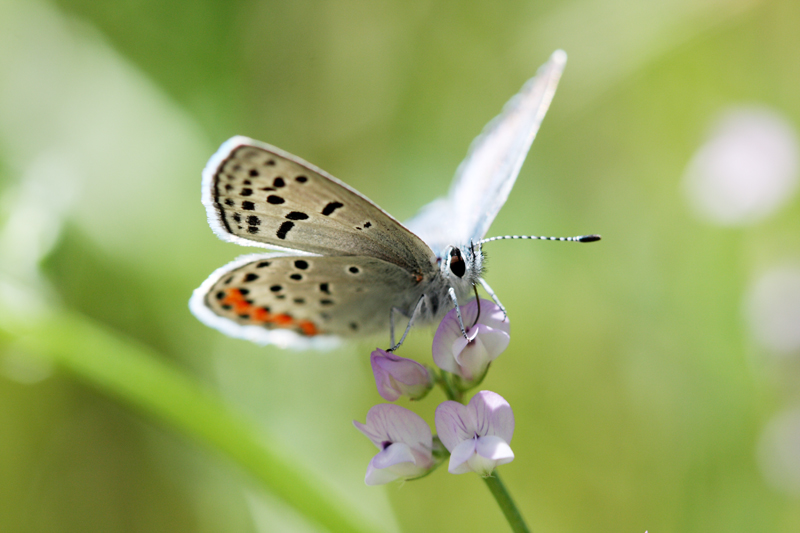
Plebejus acmon
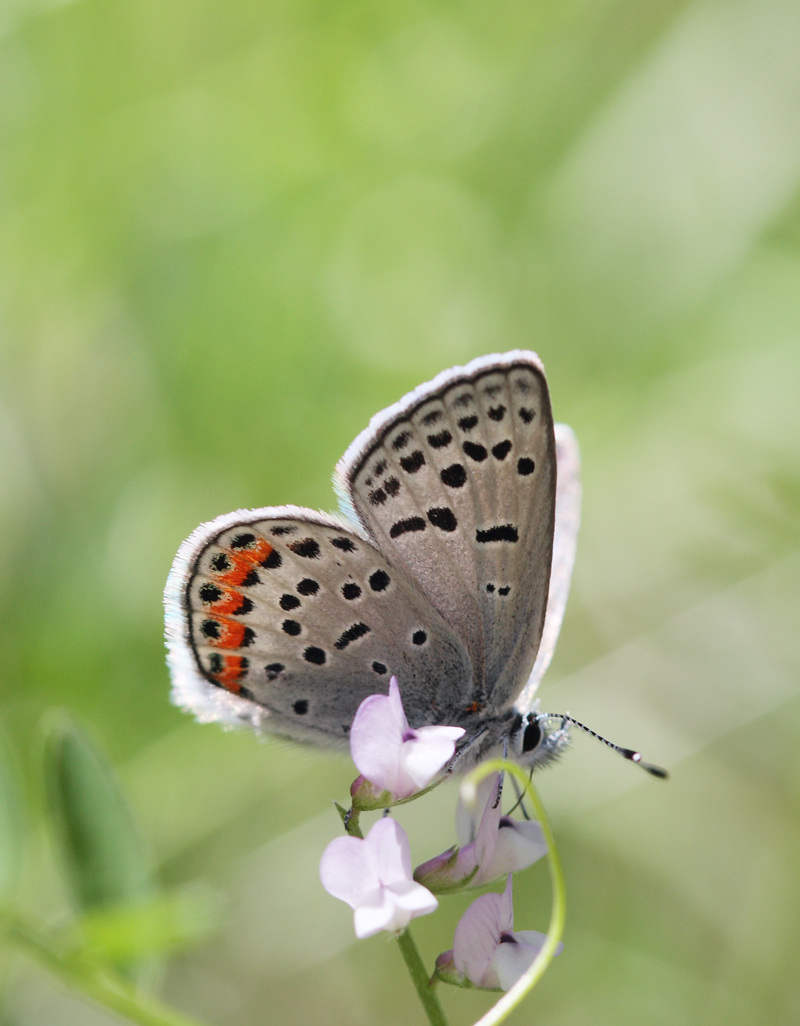
Plebejus acmon

Ethmia arctostaphylella на Eriodictyon зр.
Одно интересное примечание о Ethmia arctostaphylella – название является неправильным, он фактически не питается Arctostaphylos (Manzanita). Во время описания в 1880 Walsingham обнаружили личинки окукливаются на листьях manzinata и предположил, что это был хозяин завода. В потрясающей монографии Джерри Пауэлла группы он указывает, что этот мотылек был воспитан из Eriodictyon – который бывает цветок моли расположенный на. Два растения растут бок о бок, и это довольно легко увидеть, как блуждающий гусеница находит свой путь на соседа.
|
Скептицизм
|













